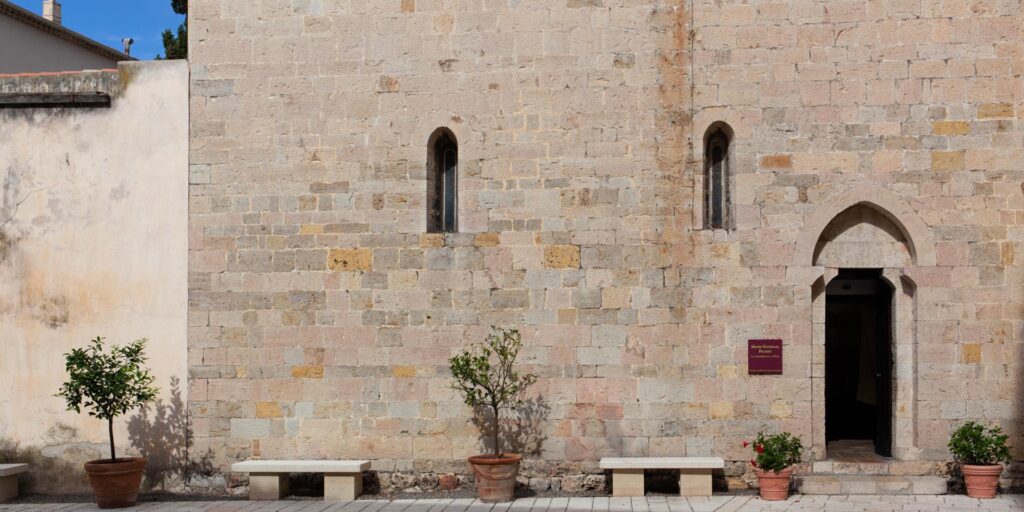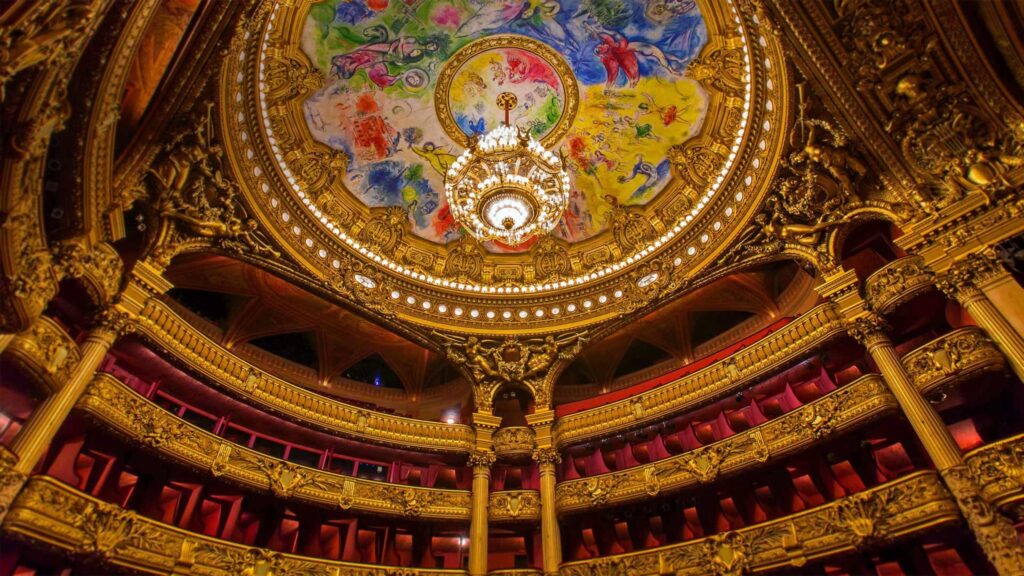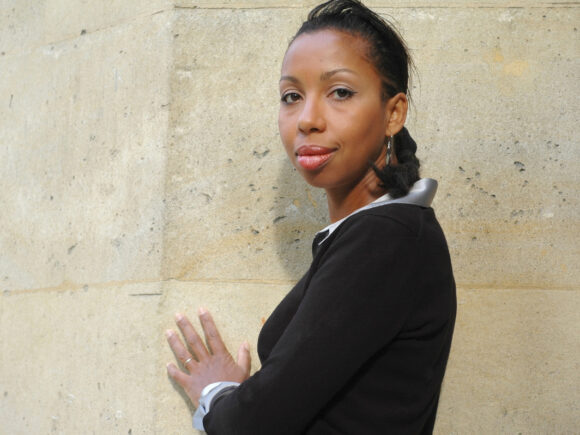When living abroad, I had the unique pleasure of exploring the all-too-little-known immersive art of French masters. Many artists based in France quite literally left their mark on the country’s locales via fresques, murales, and other works.
If you are looking for experiential art visits outside the museum walls this summer, here’s a list of hidden gems across France where you can surround yourself with art.
Jean Cocteau on the Côte d’Azur and Beyond
A poet, writer, dramaturge, cineaste, and painter, Cocteau first began to frequent the French Riviera in the early 1920s. Cocteau would go on to say that “one of my significant births made at the age of twenty-five is on the Côte d’Azur”. Interior of la Chapelle Saint-Pierre in Villefranche-sur-Mer
Interior of la Chapelle Saint-Pierre in Villefranche-sur-Mer
He resided there more long-term after his art patron, Francine Weisweller, invited him to spend a summer at her villa in Saint-Jean-Cap-Ferrat. Cocteau ended up staying for twelve years, where in lieu of paying rent he ‘tattooed’ the walls of la Villa Santo-Sospir.
During his time in southern France, Cocteau painted murals across the region – from Fréjus to Menton, as well as closer to Paris at his home in Milly-la-Forêt.
From 1950 to his death in 1963, Cocteau painted five major locations across France: la Villa Santo-Sospir in Saint-Jean-Cap-Ferrat, la Chapelle Saint-Pierre in Villefranche-sur-Mer, the Salle des Mariages in Menton City Hall, la Chapelle Saint-Blaise des Simples in Milly-la-Forêt, and la Chapelle Notre-Dame-de-Jérusalem in Fréjus.
In 1962, he also constructed mosaics made from beach pebbles at the Bastion in Menton (now a museum in his honor) and erected an outdoor amphitheater in Cap-d'Ail.
Entering these spaces, as this author can attest to, is like entering a dream of Cocteau’s that has blended with the world around it. If you are unable to visit southern France, you can tour La Villa-Santo-Sospir with the artist himself in his short film La Villa Santo-Sospir (1952).
Pablo Picasso in Vallauris
From 1948 to 1955, Picasso resided in the Mediterranean city of Vallauris. The era was marked for Picasso by fruitful engagement with the local community and political activism. The artist expanded his works to new creative modes, including ceramics, linoleum engravings, and sculptures.Reflecting on the post-war realities of the era, Picasso’s time in Vallauris culminated in his work at la Chapelle de la Guerre et de la Paix. This immense composition was painted on pliable panels later installed into the Romanesque chapel of the Château de Vallauris and was completed in 1959. Inspired by the austere buildings of the region, Picasso sought to blend sacred art with primordial works resembling ancient cave paintings.
 Exterior of la Chapelle de la Guerre et de la Paix at Château de Vallauris
Exterior of la Chapelle de la Guerre et de la Paix at Château de VallaurisWhen entering the space, Picasso depicts La Guerre (War) on the left of the vaulted ceiling, La Paix (Peace) on the right, and Les Quatres Parties du monde (The Four Parts of the World) on the back wall. The chapel now belongs to the National Picasso Museum and can be visited virtually.
Henri Matisse in Vence
Moving to the hilly, Alpes-Maritime city of Vence in 1943, Matisse installed himself at the Villa le Rêve. Across the street was a nun operated nursing home, where Matisse found nurse and model Monique Bourgeois, later Sister Jacques-Marie. As the local convent was desperate for a chapel space, the Sister asked Matisse if he would design and decorate a chapel for them. At the age of 77, Matisse began to create the chapel in 1947.Consecrated in 1951 by the Bishop of Nice, la Chapelle du Rosaire imbues a religious space with modern art. Matisse would go on to state: “This work has taken me four years of exclusive and diligent work, and it is the result of my entire working life. Despite all its imperfections I consider it to be my masterpiece.”
 Henri Matisse
Henri Matissevue de la Chapelle du Rosaire Interior of la Chapelle du Rosaire in Vence
The chapel is one of Matisse’s landmark pieces, blending stained-glass, murals, and ceramics. Even the priest’s vestments were designed by the artist. While still operating today as a church, the chapel is open to the public (and is a lovely day trip from Nice).
Marc Chagall at the Opéra Garnier
While the Chagall Museum in Nice certainly merits a visit, the figurative artist’s work can be found outside of museums across France as well. Indeed, no list on the great frescoes and murals of France is complete without mentioning Chagall’s lyrical fresco on the ceiling of the Opéra Garnier in Paris. The ceiling of the Opéra Garnier
The ceiling of the Opéra GarnierThe belle époque space of the Palais Garnier was originally completed in 1875. While the Opéra Garnier was undergoing renovation in 1964 at the behest of Minister of Culture André Malraux, Chagall added the circular fresco to the performance hall’s ceiling. Centered around the opera’s seven-ton chandelier, the 240 m2 fresco pays homage to Parisian monuments and major musical composers. The artwork later found its siblings in 1966 in two further Chagall paintings at the Metropolitan Opera in New York.
Chagall’s fresco at the Opéra Garnier can be enjoyed by looking up while attending a performance, or by taking a 90-minute guided tour of the Palais Garnier.
To learn about other artistic spaces in France that didn’t make the list, or to learn about the historic, enchanting and award-winning spaces at the French Library available for rent, please reach out to Rentals & Administrative Coordinator Sophia Kornitsky at rentals@frenchlibrary.org.

Sophia Kornitsky
Rentals & Administrative Coordinator
Sophia is native to central Massachusetts and began learning French in high school. She deepened her passion at Wellesley College where she majored in French and film. During this time, she studied abroad in Aix-en-Provence and interned at the Musée Jean Cocteau on the Côte d'Azur. Following her studies, Sophia lived in Paris for several years in a variety of education- and hospitality-based positions. When she's not at the French Library, she is going to the cinema and exploring cafés in Boston. She is thrilled to show you the beautiful and historic spaces the French Library has to offer in her role as Rental Coordinator.






